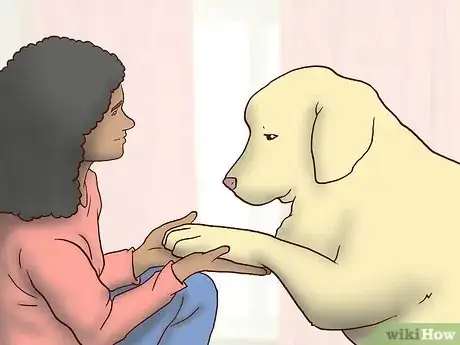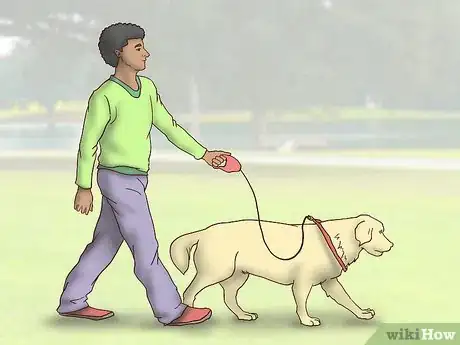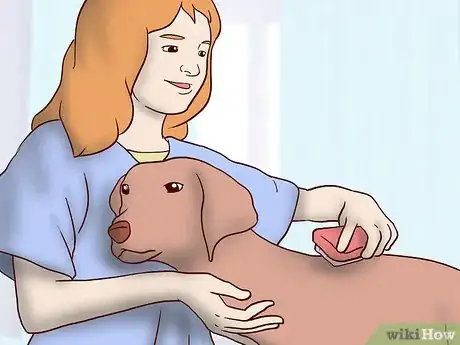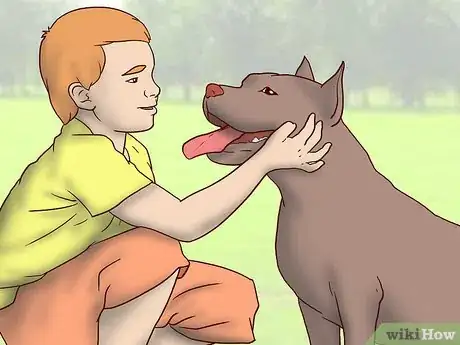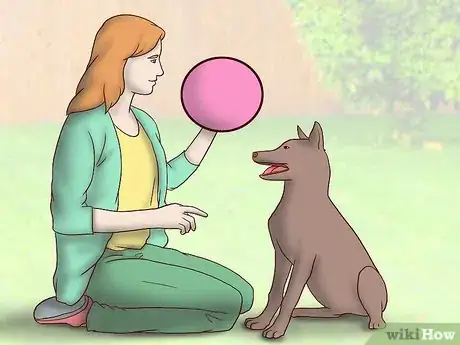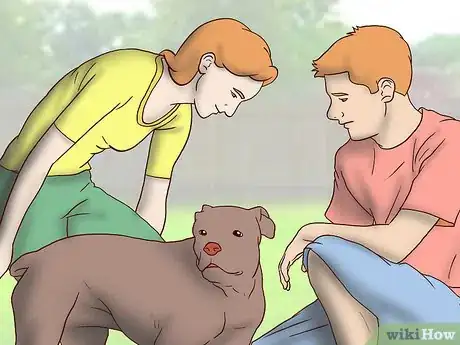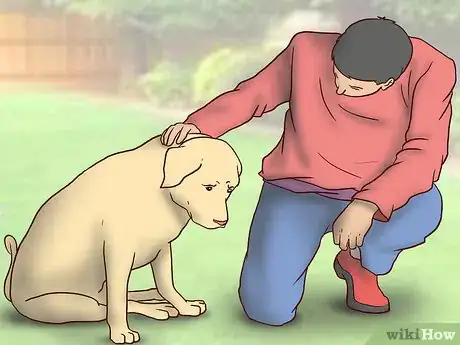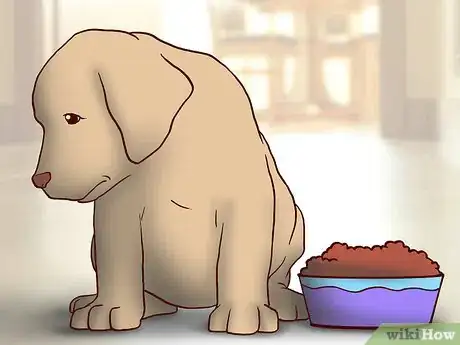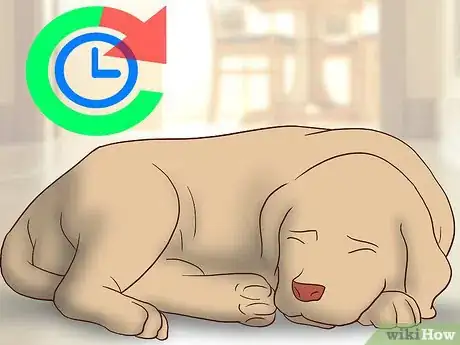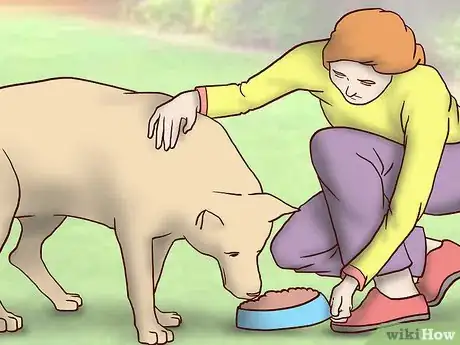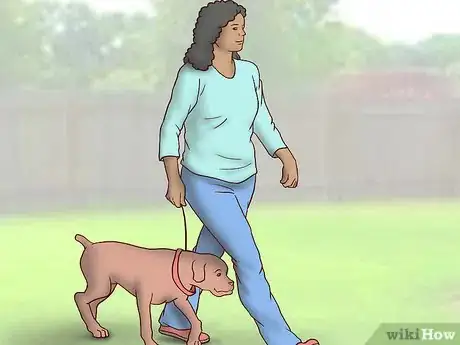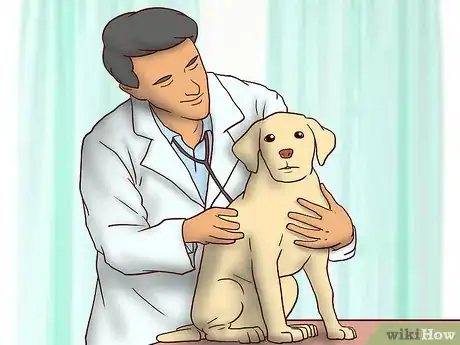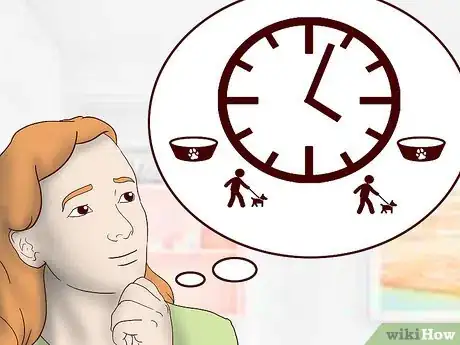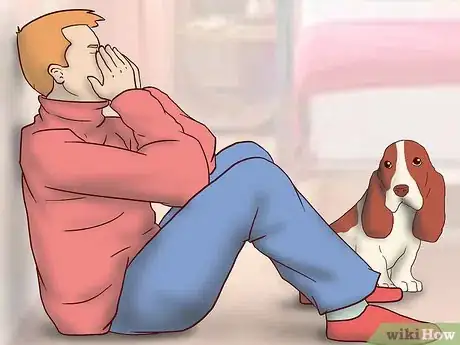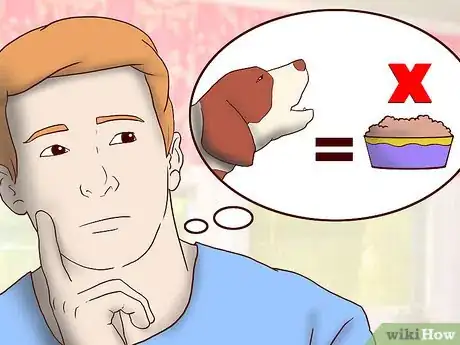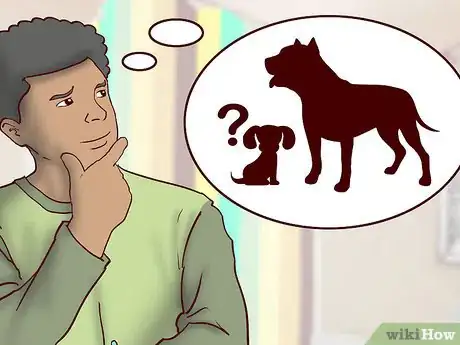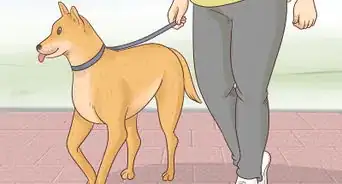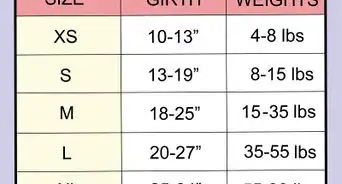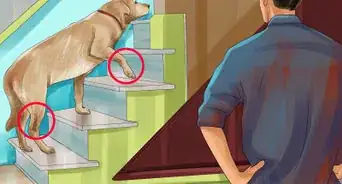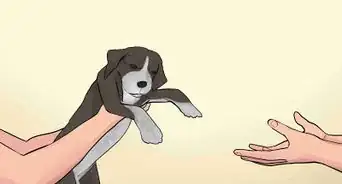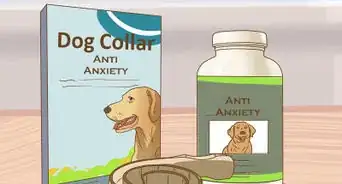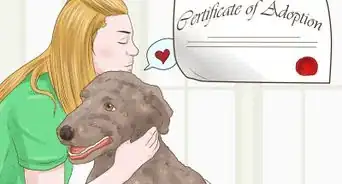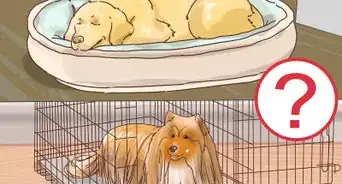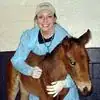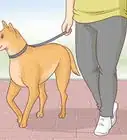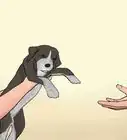This article was co-authored by Ryan Corrigan, LVT, VTS-EVN. Ryan Corrigan is a Licensed Veterinary Technician in California. She received her Bachelor of Science in Veterinary Technology from Purdue University in 2010. She is also a Member of the Academy of Equine Veterinary Nursing Technicians since 2011.
There are 11 references cited in this article, which can be found at the bottom of the page.
This article has been viewed 14,546 times.
Just like humans, dogs can mourn when a loved one has died. Older dogs may be upset by the sudden loss of their beloved owner in their life. If you have recently taken in a dog who has lost their owner, you may notice that the dog is listless or clingy. You can help the dog transition into this new period of their life by cuddling and playing with them. Older dogs can also suffer health problems from mourning, so make sure that they are eating and exercising properly. In many cases, you can keep the dog happy by providing a positive environment.
Steps
Comforting the Dog
-
1Spend extra time with the dog. A dog in mourning may need extra love and attention. Try to increase the amount of time you spend with the dog. You might spend twenty extra minutes in the morning and evening to help give the dog support while they are grieving the death of their owner.[1] During this time, you can:
- Talk to the dog
- Walk the dog
- Groom the dog
- Go on a car ride
- Visit the dog park
- Pick out a new toy together at the pet store
- Cuddle the dog on the couch or in bed
- Take the dog for a run, if the dog is healthy enough
- Play a game, like fetch or tug-of-war
-
2Pet the dog. Touch increases the bond between dogs and people. Extra cuddling, petting, and brushing can improve the dog’s mood and distract them from the loss of their owner. As you spend time with the dog, rub their belly or scratch their ears. Give them a little extra grooming time each week. This will help you bond and comfort the dog.Advertisement
-
3Play their favorite games. Playtime can distract the dog from the loss of their owner. The extra exercise can also boost their mood and decrease the likelihood of grief-related health issues. Try to identify the dog’s favorite games or toys, and spend extra time playing with them.[2]
- Some older dogs may not want to play as much. Each dog is different. If the dog is uninterested in playing, you might try another way of distracting them.
- You can also give the dog new and interesting toys. Food puzzle toys can help keep the dog busy while you are not home, reducing the dog’s separation anxiety.[3]
-
4Invite company over. The dog may appreciate having people over to spend time with. Invite a few friends over, and see how the dog reacts. If the dog enjoys the company and socializes with the people, you may want to keep it up. If the dog avoids your guests, you should respect their space.[4]
- Inviting people or dogs that the dog already knows may cheer the dog up. It can also introduce an element of familiarity in their new life.
- If the people are total strangers to the dog, invite one or two over at a time to see how well the dog handles it.
Monitoring the Dog’s Health
-
1Identify physical symptoms of mourning. Dogs mourn differently from humans. While some dogs may not mourn at all, others will become extremely clingy, anxious, or lethargic. Keep an eye out for the following symptoms. If they do not disappear after a few days, you might consider seeking help from a vet or dog behaviorist.
- Lethargy or lack of energy.
- Lack of interest in playing
- Loss of appetite
- Unsociable behavior
- Increased sleeping
- Weight loss
- Decline in physical health[5]
-
2Encourage the dog to eat. It is very common for older dogs to stop eating after the loss of their owner. This can cause other health issues to develop. If the dog seems to have stopped eating, you should try to get the dog to eat.[6]
- If possible, keep feeding the dog the same food that the old owner fed them.
- You can also give the dog kibble in a kong-type dog toy or food puzzle. The dog may enjoy trying to get the food out of the toy.
- Add a little warm chicken broth to the dog’s dry food to make it softer and more enticing.
- While a few extra treats here and there may not be detrimental to your dog, you should avoid giving the dog too many treats during this period. They may learn that they will be rewarded for whining, and they may not eat their normal food.[7]
-
3Take the dog on walks. Older dogs may not be extremely active to begin with, but they may become more lethargic after the loss of their owner. Such inactivity can lead to further health problems. If the dog is able, take them on a walk at least once or twice a day. Depending on the age and health of the dog, these may be short walks.[8]
- You can make even short walks more mentally stimulating for the dog by walking in areas with lots of interesting sights, sounds, and smells. For example, you might take your dog to the park, through the woods, or some place with water.
-
4Take the dog to the vet. If the dog continues to mourn for several weeks or if the dog is not eating, you should visit the vet to make sure that the dog is still in good health. The vet can diagnose an underlying medical problem or prescribe medication to help with the dog's anxiety or depression.[9] While at the vet, you might ask:
- "What medical issues does this dog have? Can any of them be aggravated by the loss of their owner?"
- "The dog seems really depressed. What can I do to help?"
- "The dog has been sleeping a lot since I took them in. Is this because the dog is depressed or is there another issue?"
- "The dog has not been eating since their owner died. What can I do to encourage them to eat?"
- If you know which vet the dog's old owner used, you should take them there. The vet can inform you of the dog's medical history.
Providing a Happy Home
-
1Maintain a routine. For the first few days after the owner has died, it is important to maintain the dog’s routine as much as possible. Older dogs tend not to do well with new habits, schedules, or activities, and the owner’s death may have already disrupted their life. Try to feed and walk the dog at the same times as the old owner did.[10]
- If you can, reach out to people who knew the dog when it was with the old owner, and see if they have an idea of what the dog’s former routine was like.
- If you do not know what schedule the old owner kept, you can develop a new schedule for the dog. Keep a consistent routine for the first few weeks that the dog joins you. The dog may also prompt you when they expect to be fed or taken outside.
- If there has been upheaval in the dog’s life since the owner died (for example, if the dog has been passed around by family members or if you adopted the dog from a shelter), setting a routine will be even more important for the dog. Make sure that you stick to the schedule to help the dog ease into their new home life.
- Be careful not to let the dog fall into bad habits due to grief. For example, if the dog turns up its nose at food, just let the food sit there until the dog is ready to eat it. Don’t “reward” the behavior by making a fuss.
-
2Take care of your own grief. If you knew the old owner, you may be grieving yourself. This is understandable. Do what you have to so that you can grieve in your own, personal way. This will in turn help the dog by providing a loving, happy home for them.[11]
- Avoid mourning in front of the dog. Dogs are very sensitive to grief, and they may exhibit signs of mourning if they understand that you are grieving. While it is okay to cry a little in front of the dog, you may want to step into another room to mourn privately.[12]
-
3Reinforce positive behavior. During this time, you may notice that the dog is whining, crying, or acting out. While you may want to give the dog a treat during these episodes, you should avoid rewarding them for this behavior. The dog may learn that they will earn treats if they whine. Instead, reward the dog when they are being good, such as when they are quietly resting.[13]
- For example, you may notice that the dog is sitting outside of your bedroom door at night and whining. Instead of waking up to comfort the dog, go back to sleep. In the morning, you can pet and talk to the dog. If they are well-behaved, give them a treat with their breakfast.
- Good times to treat the dog are when the dog is resting quietly, when the dog is sitting with you, or right before you leave the house.
-
4Weigh the pros and cons of getting a new dog. While a new dog companion might provide company for the dog, many older dogs do not do well with a new younger dog in the house. While some older dogs may enjoy having a puppy around, others may snap at the younger dog or bully them. Consider carefully whether a new dog is appropriate for the older dog. Also keep in mind that bringing in a new companion for the dog will not make them miss their old owner any less.[14]
- If a friend or family member has a puppy, ask if they can be introduced to your older dog. This will show you how well the dog deals with energetic puppies. If the older dog plays, cuddles, or gets along with the puppy, you might consider getting a younger dog.
- Try taking the dog to a dog park when it’s not too crowded, and see if the dog seems to enjoy being around other dogs. If so, then you might consider bringing home a new dog.
- Another option is to adopt an older or senior dog. Try to find one with a similar temperament. See if the dogs can meet first before you adopt to see if they are friendly with one another.
Warnings
- Try to become aware of any health issues the dog has before you come in ownership of them.⧼thumbs_response⧽
- Stability is important for an older dog, especially after the loss of their owner. You should not take in a dog in this case unless you are absolutely capable of providing them a home. Passing the dog off to another family or shelter will not help them during this time.⧼thumbs_response⧽
References
- ↑ http://www.prevention.com/health/healthy-living/dog-health-help-your-grieving-pet
- ↑ https://www.petplace.com/article/dogs/behavior-training/loss-mourning-a-dog/do-dogs-mourn
- ↑ http://www.vcahospitals.com/main/pet-health-information/article/animal-health/do-dogs-mourn/10736
- ↑ http://www.vcahospitals.com/main/pet-health-information/article/animal-health/do-dogs-mourn/10736
- ↑ https://pethelpful.com/dogs/When-a-Dogs-Owner-Dies-Grieving-Dogs
- ↑ http://www.prevention.com/health/healthy-living/dog-health-help-your-grieving-pet
- ↑ https://www.psychologytoday.com/blog/here-there-and-everywhere/201406/10-tips-helping-your-grieving-pet
- ↑ http://www.prevention.com/health/healthy-living/dog-health-help-your-grieving-pet
- ↑ http://www.vcahospitals.com/main/pet-health-information/article/animal-health/do-dogs-mourn/10736
- ↑ https://www.psychologytoday.com/blog/here-there-and-everywhere/201406/10-tips-helping-your-grieving-pet
- ↑ http://www.patriciamcconnell.com/theotherendoftheleash/helping-a-dog-through-a-loss
- ↑ http://www.quickanddirtytips.com/pets/dog-behavior/do-dogs-grieve-when-another-dog-dies?page=1
- ↑ https://www.psychologytoday.com/blog/here-there-and-everywhere/201406/10-tips-helping-your-grieving-pet
- ↑ http://www.pedigree.com/all-things-dog/article-library/dealing-with-grief-in-dogs.aspx
About This Article
To help an older dog grieve the loss of its owner, try to spend more time with it every day, like taking it for long walks, playing games together, or cuddling on the couch, so it doesn't feel as lonely. You can also invite some familiar people or dogs over for a playdate, which can help cheer up a sad dog. In addition to comforting the dog, try to maintain a regular feeding and walking schedule every day, since too much change can be hard for a dog that's grieving. If the dog is sleeping a lot more than usual and doesn't seem to be eating, take it to the vet so they can make sure it's healthy and prescribe medication if necessary. For more advice from our Veterinary co-author, like how to monitor a grieving dog's health, keep reading.
